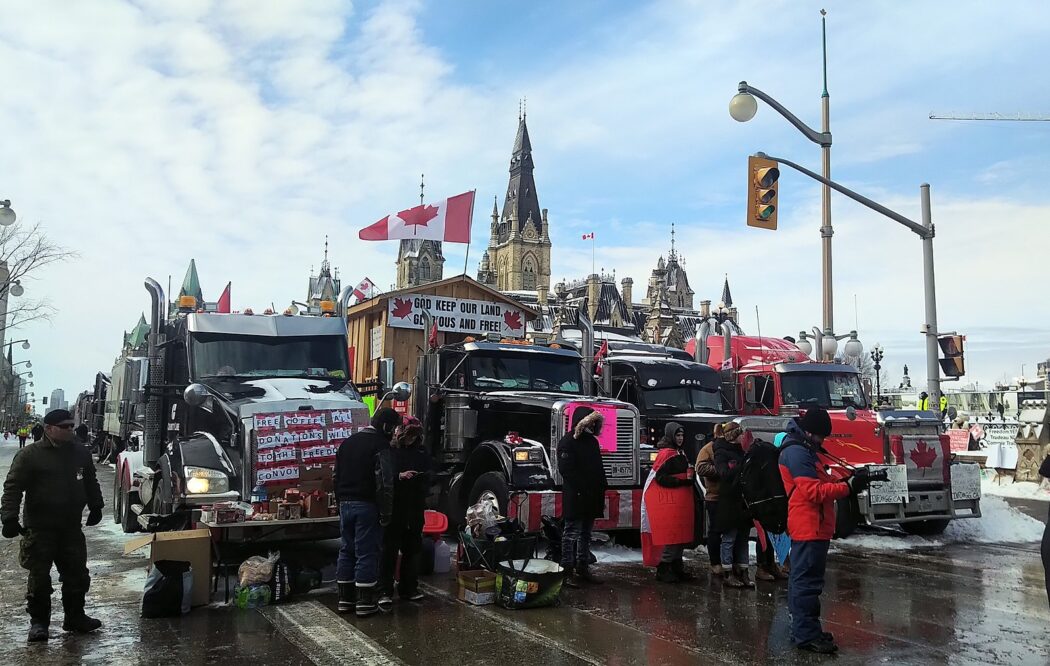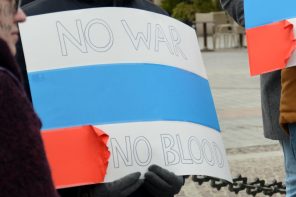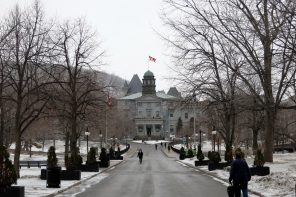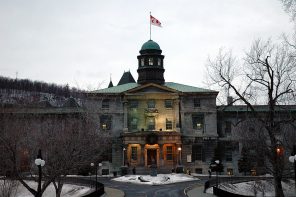On October 13th, the Public Order Emergency Commission investigating Justin Trudeau’s use of the Emergencies Act was launched. Trudeau’s invocation of the act was in response to the “Freedom Convoy” that had blocked off Ottawa’s entire downtown and several border crossings with semi-trailers in protest of federal vaccine mandates.
The purpose of this investigation is to make a judgement on the validity of the Prime Minister’s controversial use of the act. Though the result of this inquiry is not legally binding, it is an important trial in the court of public opinion for Trudeau, the Ontario government, and law enforcement agencies. While the results of this inquiry are still to be determined, it is clear that this situation was caused and worsened by failures from all levels of government.
While the results of this inquiry are still to be determined, it is clear that this situation was caused and worsened by failures from all levels of government.
The federal government’s failures began far before the convoy’s first trucks started rolling. In both his rhetoric and policy, Trudeau politicized the COVID vaccine and demonized the unvaccinated populations. While the Prime Minister’s initial rhetoric attempted to ease the concerns of the unvaccinated and emphasize the safety of the vaccine and its effectiveness in preventing serious illness, throughout the 2021 election campaign, that rhetoric changed. This pivot was even noticed by his own Member of Parliament, Joel Lightbound, who broke party ranks to say “Both the tone and the policies of my government changed drastically on the eve and during the last election campaign. A decision was made to wedge, to divide and to stigmatize.” In May 2021, Trudeau reassured Canadians that “we’re not a country that makes vaccination mandatory,” while once again fervently emphasizing the importance of vaccination to end the pandemic. By October of the same year, he mandated vaccines for federal employees and federally regulated train and plane passengers. He is also on record saying that the unvaccinated are “often misogynistic and racist,” and following this comment up with the rhetorical question “do we tolerate these people?”. The contrast between the two approaches could not be more clear.
If you hear these comments from the perspective of an unvaccinated person, it is easy to see why you would be angered. Even I, as someone that is triple-vaccinated and took each one as soon as I was eligible, am shocked by this sweeping generalization of my fellow-Canadians by our Prime Minister. It is worth noting that marginalized communities are the least-likely to be vaccinated. For example, in December of 2021, 58% of Toronto’s Indigenous population was vaccinated, compared to 79% of the general population. The unvaccinated often have a deep distrust of the government. In order to make in-roads with the unvaccinated and convince them to take their COVID vaccine, governments need to gain their trust, not demonize them as science-denying bigots.
In order to make in-roads with the unvaccinated and convince them to take their COVID vaccine, governments need to gain their trust, not demonize them as science-denying bigots.
This however, is not a piece to excuse the behaviour of the so-called “Freedom Convoy.” Key leaders of the initial convoy, including Tamara Lich and Pat King were both associated with far-right movements. Pat King is on record parroting the white-supremacist “Great Replacement” conspiracy theory, while other organizers had a list of demands that culminated in the overthrow of the government. It is worth noting however, that the convoy was an incredibly decentralized protest, without a formal hierarchy. Alongside extremists like King, there were also several normal people that were there to simply protest their disagreement with a government policy.
The 18-wheelers used by the protestors blocked off several central arteries of Ottawa, making travel within the city near impossible. People couldn’t get to work, parents couldn’t drop their kids off at school, and businesses were forced to shutter. There are stories of people who could not sleep for weeks due to deafening truck horns blowing throughout the night. Beyond Ottawa, protestors also blockaded the Ambassador Bridge in Windsor, a trade route that is responsible for 25% of US-Canada trade, accounting for close to $400 million in goods per day.
In any lawful and functioning country, this is unacceptable. Canadians have a right to protest, participate in democracy, and make their voices heard. However, they do not have the right to infringe upon the freedoms and lifestyles of their fellow citizens.
This investigation is a way to offer transparency to the public and to reveal the information that the authorities were working with when they made their decisions.
The Ottawa Police Service’s (OPS) inability to enforce the law and control the crowd goes down as the principal failure of law enforcement during the occupation. In a testimony to the Public Order Emergency Commission, officials from the Ontario Provincial Police (OPP) said that they’d shared intelligence that indicated the convoy would last longer than the two days that the OPS had planned for. This information was shared over a week before the first trucks came to Ottawa, yet no advance preparations were made by the OPS.
As for Ontario Premier Doug Ford, he was conspicuously missing throughout the crisis, despite the fact that policing is a provincial responsibility in Ontario. Before invoking the Emergencies Act, Prime Minister Trudeau reportedly urged Doug Ford to take action to clear the Windsor blockade. He told Ford that he would not require “more tools” to clear the trucks. When asked by the Commission to testify and give his account of events, Ford refused, and a court challenge ruled that he would not be required to testify. Ford’s refusal to hold himself accountable to his actions is unsurprising, but it is a disservice to his constituents.
The justification of the Emergencies Act is a legal question that will be decided in the courts. This investigation is a way to offer transparency to the public and to reveal the information that the authorities were working with when they made their decisions. What it has made clear is that the “Freedom Convoy” crisis was a result of failure from all levels of government. This situation was fuelled and worsened by Trudeau’s divisive rhetoric and policies. It showcased the Ottawa Police Service’s failure to prepare adequately and the Ontario government’s inability to hold themselves accountable. In the court of public opinion, I find these government institutions guilty.








